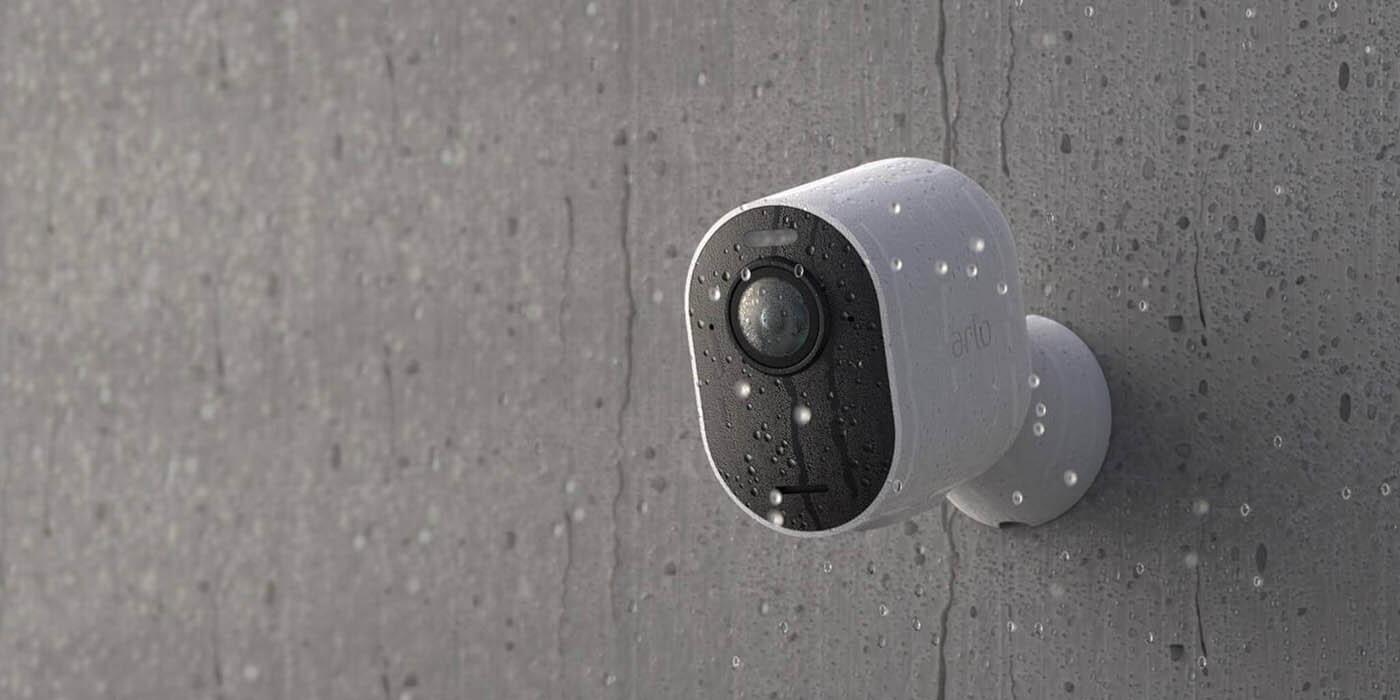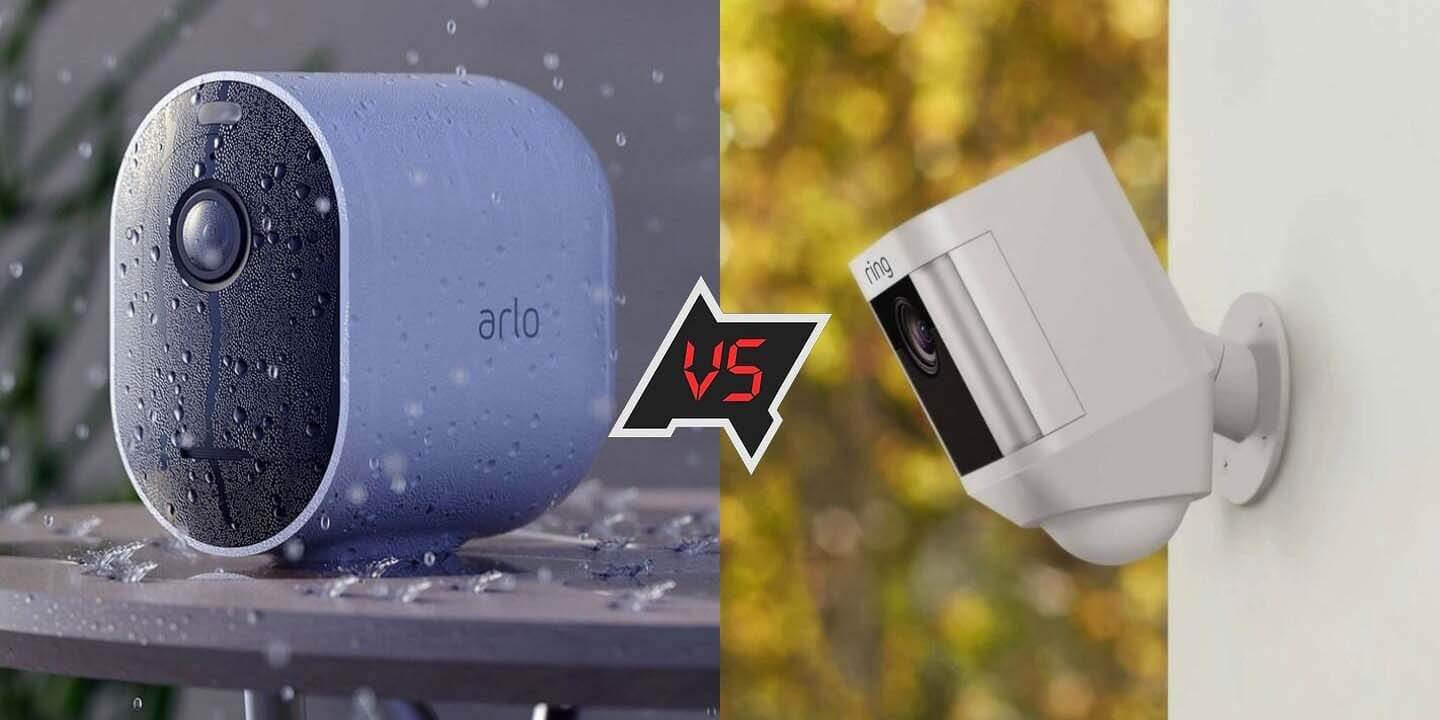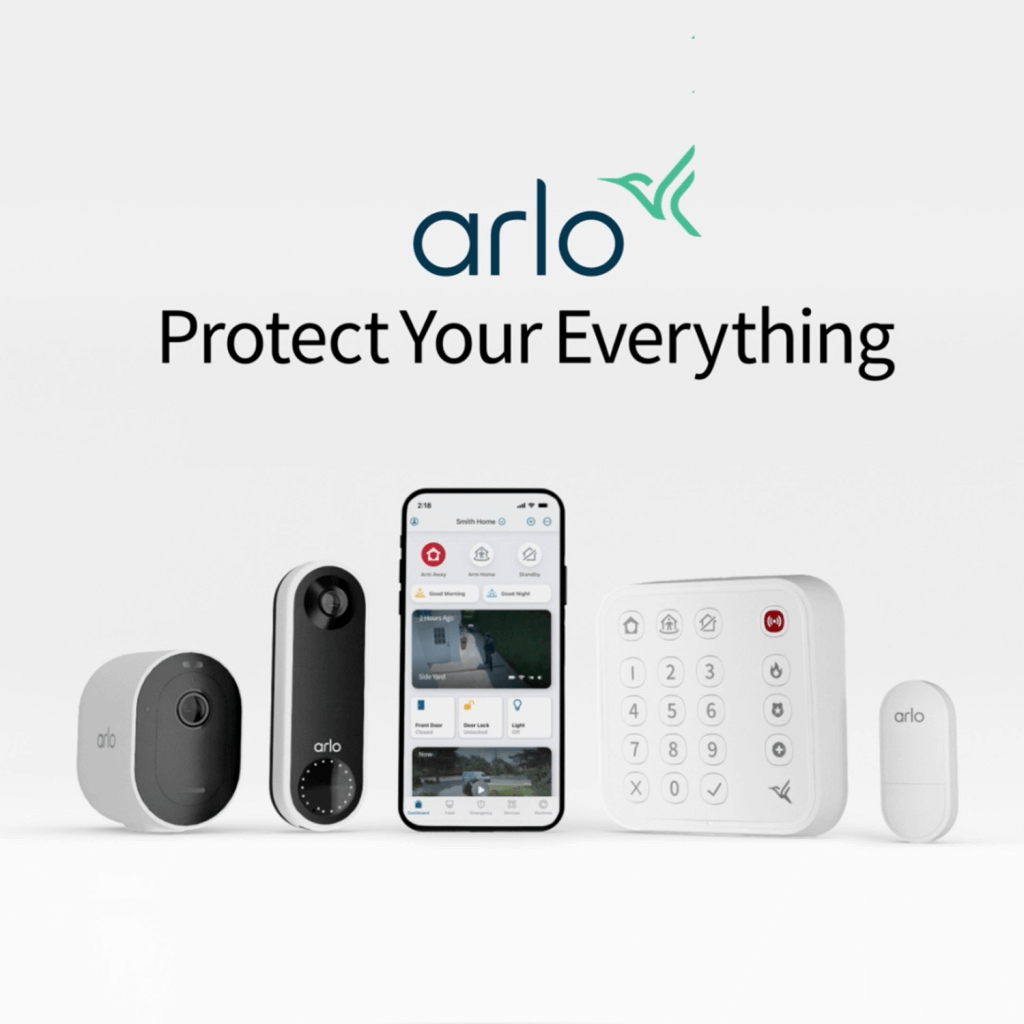Experience the Future of Home Security with Arlo

The world of home security has evolved dramatically over the last few years. A name that often comes up in any conversation about this subject is Arlo. Known for its wireless security cameras, Arlo has made home security simpler and more accessible than ever before. This blog post aims to provide a comprehensive understanding of the brand and my personal experience using its products.
Company Background
Arlo was spun off from Netgear, a well-known networking company, in 2018. Since then, it has become a powerhouse in the home security industry, offering a broad range of smart home products with its Arlo security cameras sitting at the helm.
The Arlo Product Range
Arlo’s range of products is diverse and innovative. Some of its notable products include:
- Arlo Pro Series: This series features high-definition video, two-way audio, and a siren. The Arlo Pro 4 is the latest in this lineup, boasting color night vision and a wire-free design.
- Arlo Ultra Series: Offering 4K HDR video quality, an integrated spotlight, and color night vision, the Ultra series is Arlo’s top-tier product line.
- Arlo Video Doorbell: This wired doorbell camera provides a wider, 180-degree viewing angle and direct-to-mobile video calls.
- Arlo Essential: This is Arlo’s affordable, no-hub-required security camera, perfect for first-time users.
My Personal Experience with Arlo
I’ve always been interested in smart home technology, and home security was an area I wanted to explore. After researching various options, I decided to purchase the Arlo Pro 4.
The setup process was a breeze. I downloaded the Arlo app, followed the step-by-step instructions, and my camera was up and running in no time. The camera’s wireless design was a huge plus, allowing me to place it anywhere I wanted without worrying about finding a power outlet.
The picture quality, even at night, was crystal clear. I was particularly impressed by the color night vision. It provided a clear and vivid view of my backyard, which was previously shrouded in darkness.
The two-way audio feature has also come in handy. Whether it was to scare off a nosy squirrel or to communicate with a delivery person, I found this feature incredibly useful.
One thing that sets Arlo apart is its Arlo Smart subscription service. It offers advanced AI detection, which can differentiate between people, vehicles, animals, and packages. This feature significantly reduced the number of false alarms I received.
Ring: Revolutionizing Home Security – A Personal Experience

In the realm of smart home security, few names are as renowned as Ring. A pioneer in video doorbells, Ring’s mission is to make neighborhoods safer. Having personally used Ring’s products, I can attest to the innovation and peace of mind they bring.
The Genesis of Ring
Ring was founded by Jamie Siminoff in 2013, a visionary who sought to transform home security. Fast-forward to the present day, and Ring, now an Amazon-owned company, has become synonymous with smart home security systems.
Ring’s Impressive Product Line
Ring’s range of products is broad, catering to various security needs. Here are a few notable ones:
- Ring Video Doorbell: This is Ring’s flagship product. The latest version, the Video Doorbell Pro 2, offers 1536p HD video and a unique Head-to-Toe view.
- Ring Security Cameras: Ring provides both indoor and outdoor cameras, like the Ring Stick Up Cam and the Ring Floodlight Cam, with features such as two-way talk and night vision.
- Ring Alarm System: This is a comprehensive home security system that includes door/window sensors, motion detectors, and a base station that integrates with other Ring devices.
- Ring Smart Lighting: These motion-sensor equipped lights can be integrated with Ring cameras and doorbells for enhanced security.
My Personal Experience with Ring
Being a tech enthusiast, I have always been intrigued by the potential of smart home security. After much deliberation, I chose to install the Ring Video Doorbell Pro 2 at my home.
Setting up the device was straightforward. I simply followed the instructions on the Ring app, and within a few minutes, my video doorbell was operational.
The video quality has been outstanding. The 1536p HD video provides crystal clear imagery, and the Head-to-Toe feature ensures I can see everything happening at my doorstep.
The two-way talk functionality is particularly useful. Whether it’s giving delivery instructions or talking to a guest before opening the door, it has added a new layer of convenience.
One feature I found indispensable is the Ring Neighbors app. This community-oriented app allows neighbors to share videos of suspicious activity, making the entire community safer.
I also subscribed to the Ring Protect Plan, which offers additional benefits like video recording and sharing. It has proved to be excellent value for money.
Arlo vs. Ring: A Personal Journey Into Home Security

When it comes to home security, two names often rise above the rest: Arlo and Ring. As a tech enthusiast with a keen interest in ensuring the safety of my home, I’ve had the opportunity to use products from both of these industry titans. This blog post is a deep dive into my experiences with both, providing a comprehensive comparison that might help you decide which one is right for you.
Arlo and Ring: A Quick Overview
Both Arlo and Ring are renowned for their state-of-the-art smart security systems. Arlo, a Netgear spin-off, has made a name for itself with its high-quality wireless security cameras. Ring, an Amazon-owned company, revolutionized the market with their video doorbells and has since expanded its product range significantly.
My Arlo Experience
I started my smart home security journey with Arlo, specifically the Arlo Pro 4. The wireless design and ease of installation were impressive, and the color night vision provided clear visibility even in the darkest conditions. The two-way audio feature was a fantastic addition, and Arlo’s Smart subscription service proved to be a worthwhile investment, with its advanced AI detection reducing false alarms significantly.
My Ring Experience
Next, I ventured into Ring’s ecosystem with the Ring Video Doorbell Pro 2. The installation was straightforward, and the video quality was nothing short of exceptional. The unique Head-to-Toe view and two-way talk functionality added convenience and enhanced security. I also found great value in the Ring Protect Plan and appreciated the community-centric Ring Neighbors app, which allowed for sharing of suspicious activities.
Arlo vs. Ring: The Showdown
Having used both systems, here’s how I’d compare the two:
- Installation: Both systems were fairly easy to install, thanks to their user-friendly apps guiding the process.
- Video Quality: While both offered excellent video quality, Arlo’s color night vision was a standout feature.
- Two-Way Audio: Both systems provided this feature, making it easy to communicate with visitors or deter potential intruders.
- Smart Features: Arlo’s AI detection and Ring’s Neighbors app were both impressive, serving different purposes – one for smarter notifications, the other for community safety.
- Subscription Services: Both Arlo’s Smart and Ring’s Protect Plan offered additional features and functionalities that enhanced the base product.
So, Arlo or Ring?
Deciding between Arlo and Ring isn’t easy, as both offer robust features and deliver high-quality products. However, your choice ultimately depends on your specific needs.
If a wireless setup and advanced AI capabilities are your top priorities, Arlo might be the right fit. If, however, a wider product range (including smart lighting) and a community-focused app appeal to you, Ring could be the way to go.
In my experience, both Arlo and Ring have lived up to their reputations, providing reliable and efficient home security solutions. They’ve given me peace of mind, ensuring that my home is secure whether I’m there or away.
Use Case Scenarios: Unleashing the Power of Technology in Daily Life
In the exciting world of technology, the possibilities are endless. But how does technology really fit into our everyday life? How can we use it to solve real-world problems or enhance our daily experiences? In this blog post, I’ll share some of my personal experiences with technology and provide a few use case scenarios that may inspire you to explore tech solutions in your own life.
Smart Home Automation
As a tech enthusiast, one of my first ventures into real-world tech application was smart home automation. I decided to start with lighting and chose the Philips Hue smart lighting system.
Scenario: Coming home late from work, I wanted to avoid stumbling in the dark or fumbling for light switches.
Solution: I set up my Philips Hue lights to turn on automatically when my phone connects to my home Wi-Fi network. This way, I always come home to a well-lit house, enhancing safety and convenience.
Home Security with Arlo and Ring
Safety and security are paramount in today’s world, and technology offers some fantastic solutions. As I’ve shared in previous posts, I’ve had personal experiences with both Arlo and Ring security systems.
Scenario: I wanted to keep an eye on my home while I was away on vacation, ensuring the safety of my property.
Solution: With the Arlo Pro 4 and Ring Video Doorbell Pro 2, I could monitor my home remotely. Any motion detected would trigger an alert on my phone, allowing me to view live footage and act promptly if needed.
Fitness Tracking with Wearable Tech
As a fitness enthusiast, I’ve found that wearable technology can significantly enhance workout routines. I use an Apple Watch for this purpose.
Scenario: I wanted to track my workouts accurately, monitor my heart rate during exercises, and maintain a record of my fitness journey.
Solution: My Apple Watch tracks my workout durations, types of exercise, calories burned, and heart rate. This data gives me insights into my performance and progress, helping me reach my fitness goals.
Smart Cooking with Instant Pot
In the realm of smart kitchen appliances, the Instant Pot has been a game-changer for me.
Scenario: With a busy schedule, finding time to cook healthy meals was challenging.
Solution: Using the Instant Pot, I could quickly and easily prepare a variety of meals. Its smart features like preset cooking programs and timers made the process even more convenient, freeing up my time for other tasks.
Navigating the Labyrinth of Security and Privacy in the Digital Age

In our increasingly connected world, security and privacy have never been more important. We share vast amounts of personal data online daily, whether it’s through social media, online shopping, or even smart home devices. How can we ensure this data remains secure and private? As a tech enthusiast and privacy advocate, I’ll share my personal journey and insights on this critical topic.
Understanding Digital Security and Privacy
The terms ‘security’ and ‘privacy’ are often used interchangeably, but they represent different aspects of data protection. Security involves measures to protect data from unauthorized access or attacks, while privacy refers to the rights and controls individuals have over their personal data. Understanding this distinction is the first step in protecting ourselves online.
My Journey with Online Security
Like many of you, my life is heavily digital. From working remotely to managing finances, almost all aspects of my life intersect with the digital world. With this in mind, I’ve made online security a priority.
Password Management: I use a password manager, LastPass, to create and store unique, complex passwords for each online account. This reduces the risk of password reuse, a common vulnerability in online security.
Two-Factor Authentication (2FA): I enable 2FA wherever possible. This adds an extra layer of security, making it harder for unauthorized users to access my accounts.
Regular Software Updates: I ensure all my devices and software are regularly updated. Updates often include security patches that protect against known vulnerabilities.
My Approach to Online Privacy
Online privacy is just as important as security. Here are some steps I’ve taken to protect my personal data:
Privacy Settings: I regularly review and adjust the privacy settings on my social media accounts, ensuring that I’m only sharing information with trusted networks.
Virtual Private Network (VPN): I use a VPN, specifically ExpressVPN, to encrypt my internet connection, making it more difficult for others to track my online activity.
Data Sharing: I’m careful about the information I share online and the permissions I grant to apps and websites.
Smart Home Security and Privacy
With the advent of smart home devices like Ring and Arlo, security and privacy have taken on new dimensions. I’ve ensured my smart home devices are secure by changing default passwords, regularly updating the software, and being mindful of where and how I install these devices.
User Reviews: The Guiding Compass in My Tech Adventures
In a world flooded with products and services, making the right choice can often seem like navigating through a labyrinth. Here is where user reviews come into play. As a tech enthusiast who’s constantly exploring new gadgets and software, I’ve found user reviews to be an invaluable guide in my tech journey. This blog post will delve into my experiences with user reviews, their importance, and how to effectively use them.
My Affair with User Reviews
Whether it’s a smartphone, a smart home device, or a productivity software, before making a purchase, my first stop is always the user reviews section. Over the years, they’ve helped me choose between alternatives, avoid problematic products, and even discover features or issues I hadn’t considered.
When I was deciding on a home security system, it was the user reviews of Arlo and Ring that guided my decision. I could compare real-life experiences with video quality, app reliability, customer service, and more. This firsthand information was instrumental in making an informed choice.
Why User Reviews Matter
Authentic Experience: User reviews provide real-world experiences and insights that product descriptions and promotional materials often overlook.
Identify Common Issues: If multiple users report the same problem, it’s likely you’ll encounter it too.
Product Comparison: Reviews often compare products, providing valuable insights into how they stack up against each other.
Post-Purchase Support: Reviews can shed light on a company’s customer service and how they handle issues after purchase.
Decoding User Reviews: Tips and Tricks
Not all user reviews are created equal. Here’s how I extract valuable information:
- Look for Detailed Reviews: The more detailed a review, the more helpful it usually is. It shows that the user has thoroughly tested the product.
- Pay Attention to the Cons: Even the best products have downsides. Understanding these can help set realistic expectations.
- Check the Reviewer’s Profile: This can help determine the credibility of the review. Is the reviewer a verified purchaser? Do they review a broad range of products?
- Consider the Overall Rating Distribution: A bunch of 5-star reviews could be as misleading as a bunch of 1-star reviews. A mix of ratings usually indicates a more accurate user sentiment.
FAQs: My Personal Tech Journey Demystified
As a tech enthusiast who’s constantly sharing my experiences and reviews online, I often encounter a flurry of questions about my gadget choices, my tech routines, and how I keep up with the rapidly changing tech landscape. I’ve decided to address some of the most frequently asked questions (FAQs) in this blog post. So, let’s dive right in!
1. What’s Your Favorite Tech Gadget?
As someone who loves exploring new tech, it’s tough to choose just one! However, I’ve found smart home devices like the Arlo security system and Ring doorbell to be game-changers. They’ve significantly enhanced my home’s security, giving me peace of mind.
2. How Do You Choose Which Gadgets to Buy?
I rely heavily on user reviews and tech blogs to make informed decisions. I also consider my personal needs, the gadget’s features, and my budget. Remember, the most expensive or popular gadget isn’t always the best fit for everyone.
3. What’s Your Stand on Security and Privacy in the Digital Age?
As a tech user, I believe security and privacy are paramount. I use password managers, enable two-factor authentication, and regularly update my software to enhance security. For privacy, I’m mindful of the information I share online and use tools like VPNs to protect my data.
4. How Do You Keep Up with Tech Trends?
Staying updated in the fast-paced world of tech requires a proactive approach. I follow various tech news websites, subscribe to tech YouTube channels, and participate in online tech communities. Podcasts and newsletters from tech leaders also provide valuable insights.
5. Do You Have Any Tech-Related Regrets?
Like everyone, I’ve made some less-than-perfect tech decisions. For instance, I once bought a smartphone solely based on its hype, without considering whether its features matched my needs. It served as a reminder that understanding personal needs is crucial in tech decisions.
6. Any Advice for Someone New to the Tech World?
Welcome aboard! Start with identifying your needs and how technology can address them. Read user reviews, watch unboxing and review videos, and don’t shy away from asking questions. Remember, there’s no such thing as a silly question in the tech world!

